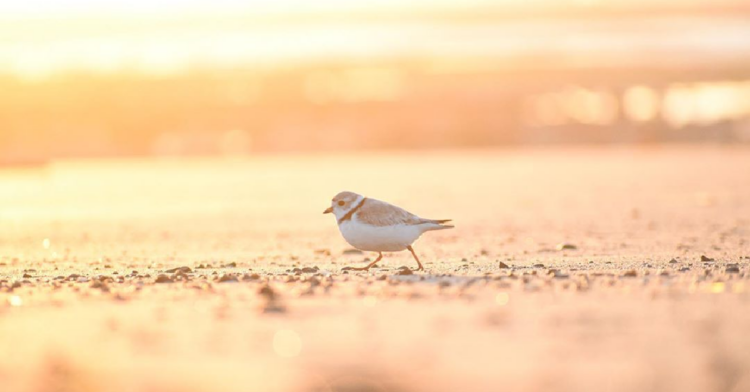There is something about birds that hang around on the ground that really fascinates me. Whether they are truly flightless, like a penguin, or simply prefer to stay grounded, it’s just so at odds with our mental image of birds being wonders of flight and freedom.
Also, watching birds toddle around on the ground on those spindly legs is just funny and cute.
When we think of shorebirds, it’s definitely seagulls that come to mind first, but that’s not what I want to focus on here.

Rather, I’d like to turn your attention to a North American shorebird called the piping plover. As adults, they average only 43-64 grams (1.5 – 2.25 ounces) and grow to be about 20 centimeters (7.8 inches) long.
They are cute birds with black markings and bright orange, stubby beaks.
Oh, and their babies are *freaking adorable*.

I swear my voice raised an octave when I first saw those teeny chicks all piled up together.
Piping plovers live along the beaches of the Great Lakes as well as in the wetlands of the Great Plains. They migrate to the Gulf Coast and along the Atlantic beaches of the Southeastern United States.
Unlike many bird babies, newborn piping plovers stay in their nests just long enough to dry out after hatching.
Then they wander out to toddle in the sand, never returning to the nest. Until they are strong enough to fly, they take shelter under a parent — usually the male — or will freeze in place to avoid detection by a predator.
After about 20 days, they are strong enough for short flights and can begin to migrate a week or so later.
Unfortunately, these little dudes are threatened due to habitat loss and general human interference.

Though the average population has increased since 1991 through careful conservation practices and the IUCN Red List categorizes them as Near Threatened, the Committee on the Status of Endangered Wildlife in Canada considers them endangered.
A lot of the issue stems from humans sharing the same beaches as the birds, resulting in destroyed nests. Conservation efforts are continuing with hopeful signs for the future.
h/t: Hinterland Who’s Who

















































